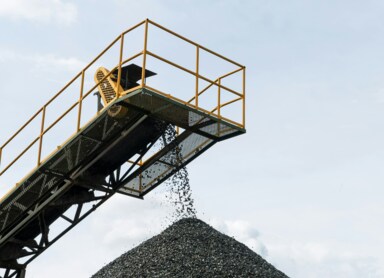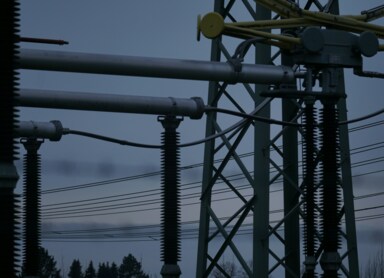Energy resources - what is worth knowing about them?
Energy raw materials play an extremely important role for both a country's energy security and its external policy. They are also important for businesses. What does access to energy resources, or lack thereof, mean for your business?
Energy raw materials play an extremely important role for both a country's energy security and its external policy. They are also important for businesses. What does access to energy resources or lack thereof mean for your business?
Energy resources - classification and use
Energy resources are referred to as natural resources of strategic importance to the country. Their role is twofold. On the one hand, the extraction and processing of energy resources is essential for powering the economic infrastructure and global energy security. On the other hand, the availability of energy resources is one of the factors that determine a country's position in the international arena. The more raw materials are exported and the less imported, the stronger a country is considered economically, as it is distinguished by its independence from external supplies.
When it comes to the value of the raw materials market, Russia is in first place, with resources estimated at a dizzying $75 trillion. Also in the top three are the United States ($45 trillion) and Saudi Arabia ($34.4 trillion).
Energy raw materials can be classified in various ways. One of them is to separate:
- solid minerals - these include peat, lignite and hard coal, as well as uranium ores;
- Liquid minerals - crude oil;
- gaseous minerals - natural gas and methane;
The common denominator that links all these types of raw materials is their use in the energy sector. The flagship example that characterizes the Polish economy is hard coal. It is used mainly for the production of electricity and heat in power plants and combined heat and power plants. Households reach for it in search of relatively cheap fuel.
Crude oil is essential for the production of gasoline, kerosene, oils, lubricants and asphalt, among others. Uranium ore, on the other hand, is an extremely efficient raw material used to produce electricity in nuclear power plants, and to a small extent for medical and naval purposes.
Energy resources in the world - analysis and prospects
In the course of the geological evolution of the Earth as a planet, there has been a distribution of energy resources in a certain way. Some countries have access to a wide variety of raw materials in abundance, while others must primarily import them. How do the data for Poland look in this context? According to data published by the Polish Academy of Sciences for 20221Poland primarily produces:
- hard coal;
- lignite;
- natural gas;
- crude oil (in negligible amounts).
Unfortunately, only lignite is abundant enough to cover current demand. All other energy resources must be imported from other countries. In practice, this means that energy security to some extent depends on maintaining good international relations.
Regardless of political issues, it is important to realize that the Earth's natural resources are non-renewable (peat grows at a rate of 1 mm per year, which also makes it a non-renewable resource).
A company that cares about maintaining energy independence should constantly look for alternatives to ensure continued access to the necessary raw materials. Otherwise, it may turn out that at some point non-renewable resources will run out, or their acquisition will become so unprofitable that the business will lose its previous profitability.
Extraction of energy resources - environmental and economic impact
The extraction of natural resources brings obvious profit in the form of resource availability. It also affects the economy, reflected in the employment structure of the community, fluctuations in the price of stock market instruments and the uneven development of various industries. It requires a complex logistical system that must ensure efficient redistribution of resources. This, in turn, entails a significant burden on national roads and the need to maintain industrial rail networks and airports.
Exploitation of the earth's energy resources not only depletes their pool for future generations, but also entails far-reaching consequences for the environment. The organization of open-pit mines brings with it the need to develop vast areas. Deforestation and urbanization cause the disappearance of local flora and fauna. Environmental degradation brings with it the disappearance of biodiversity, and this in turn can affect the functioning of the entire ecosystem.
The operation of energy infrastructure is also a risk of water pollution and the formation of greenhouse gases, responsible for global warming, among other things. When energy resources are extracted in liquid form, there is also a risk of leakage into the environment.
One of the most notorious environmental disasters of this type occurred on February 15, 1996, when the tanker Sea Empress ran into the rocks of St. Anne's Head during its approach to the port of Milford Haven. The collision resulted in a massive tear in the hull plating and spilled more than 70,000 liters of crude oil and several hundred liters of heavy marine fuel into the environment. According to reports, it took two decades for the environment to return to its pre-disaster state.
Alternative energy resources - development and importance
The management of non-renewable raw materials is very complex, costly, and in the long-term - doomed to failure, because at some point these resources will simply run out. This is a threat not only to countries, but also to individual companies or even households. This is why it is so important to develop infrastructure that allows the use of alternative energy resources. These include, among others, energy:
- solar;
- wind;
- hydroelectric;
- obtained from biomass;
- geothermal.
All of these resources provide renewable energy without harming the environment, or with an effect far less than that of conventional sources. Poland's Energy Policy 20401plans a gradual increase in the share of Renewable Energy Sources (RES) in gross final energy consumption to nearly 29% in 2040. At the same time, this share is to be consistently increased in such industries as electricity, heating and cooling, and transportation.
Investments in RES are important not only for the state and society, but also for individual organizations, so it is worth taking advantage of them. Innovation in this field means lower costs of doing business, greater energy security and meeting increasingly stringent regulatory standards.
Energy resources and energy security - challenges and management strategies
When mentioning energy security, it's worth considering ways to help achieve it at the local level. How to carry out an energy transition to make your business operate more stably?
- Decide to install renewable energy technologies in your company;
- Ensure the supply of electricity from green sources;
- consciously manage self-consumption of electricity by installing energy storage, EV chargers or purchasing electric cars;
- invest in your company's energy efficiency to obtain color certificates from the Energy Regulatory Authority.
No matter what your business does, access to energy resources is essential for your business to operate and grow. Think about the possibility of gradually replacing conventional raw materials with RES. It's a whole host of tangible benefits. We will plan a comprehensive strategy of action for you.
1. https://gospodarkasurowcami.pl/surowce_energetyczne
2. https://bip.mos.gov.pl/fileadmin/user_upload/bip/strategie_plany_programy/Polityka_energetyczna_Polski/PEP2040_2021-02-02.pdf






